PESHAWAR: As the entry point to the subcontinent, Peshawar has long been a vital city where monarchs, soldiers, and foreign invaders built mosques, churches, and gurdwaras in strategic sites so they could freely worship their religion.
The kings, warlords, and Muslim commanders had first stayed in Peshawar after traveling from Central Asian Republics (CARs) and Afghanistan through the historic Khyber Pass. There, they had built numerous mosques and places of worship for minorities in an effort to foster interfaith harmony and bring people of all faiths closer before marching on India.
According to Bakht Zada Khan, senior research officer of the Archaeology and Museums Department, “the recent GorKathri excavations revealed that Islam had first spread in the border areas of Khyber Pakhtunkhwa and Afghanistan after Sabuktigin, a Turkic slave commander laid the foundations of Ghaznavi dynasty at Ghazi in 977 AD in Central Afghanistan.”
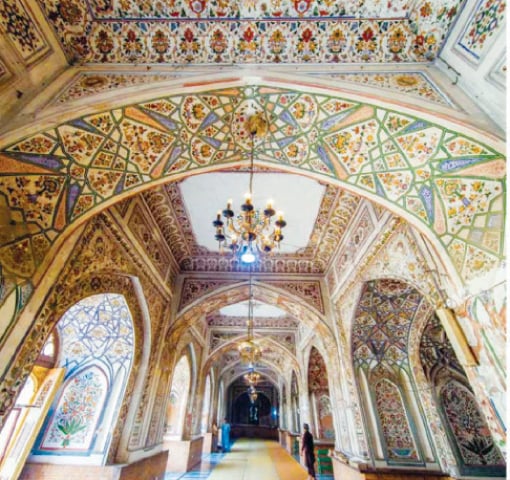
He claimed that Mehmud Ghaznvi had taken control of the Ghaznavi kingdom and spread his power to Punjab following the death of Sabuktigin and the uprising against his son Ismail. Mehmud Ghaznvi had defeated the Raja of Jaypala of the Kabul Shahis at the battle of Peshawar in 1001 AD.
As a result, Islam has spread widely throughout Bannu, Waziristan, Khyber, and other border regions of Khyber Pakhtunkhwa, and both large and small mosques have been built.
He claimed that in 1984, an Arabic inscription engraved on a black marble was discovered on the hillsides beneath Raja Gira’s castle. This inscription verified the establishment of the historic Odigram Mosque in Swat, also called the Sultan Mahmood Ghaznavi Mosque, which was built in 1048 CE at the behest of General Amir Nustagin of Ghaznavi and attracted a sizable congregation during Ramadan in addition to fostering religious tourism.
Subsequently, he added that the Muslim rulers of different dynasties established Peshawar through the construction of both large and minor mosques, such as the historic Yakagund mosque in the Mohmand district, the Sheikh Habib mosque in 1650 at Bala Manari, and the Gunj gate mosque alais Khawja Maroof mosque some 600 years ago.
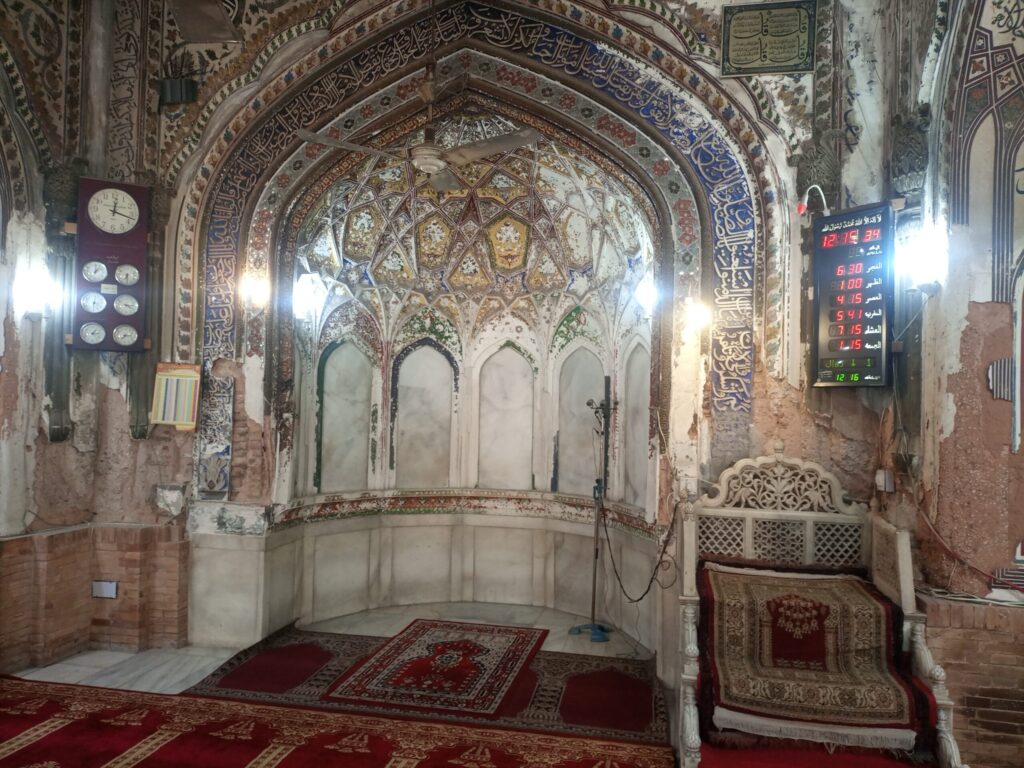
“Then, in 1660–1670, the Mughal rulers arrived in Peshawar and the city’s governor, Nawab Mohabat Khan, began construction on the famous Mohabat Khan mosque,” the speaker stated.
Mohabat Khan is a blend of Islamic and Mughal architecture. A big part was built with exquisite white marble by King Aurangzeb Alamgir, while a tiny amount was built by Mughal emperor Shah Jehan. After the Sikh rulers’ devastation, the mosque was restored in 1898 after it was finished in 1680, he added.
The mosque had a lot of highs and lows. In addition to terrifying the public, Mohabat Khan’s minarets were utilized for the hanging of convicts during the Sikh era (1834–1849). Two to five persons were hanged from the minarets each day. After the British occupied Peshawar in 1949, the mosque was restored and given to the locals for use as a place of worship.
It was designated as a historical site in 1982, and the Auqaf agency assumed management of it. The elders of the refugee tribes gathered in the mosque during the Soviet invasion of Afghanistan in 1979 to promote solidarity among the Afghan people against the invaders.
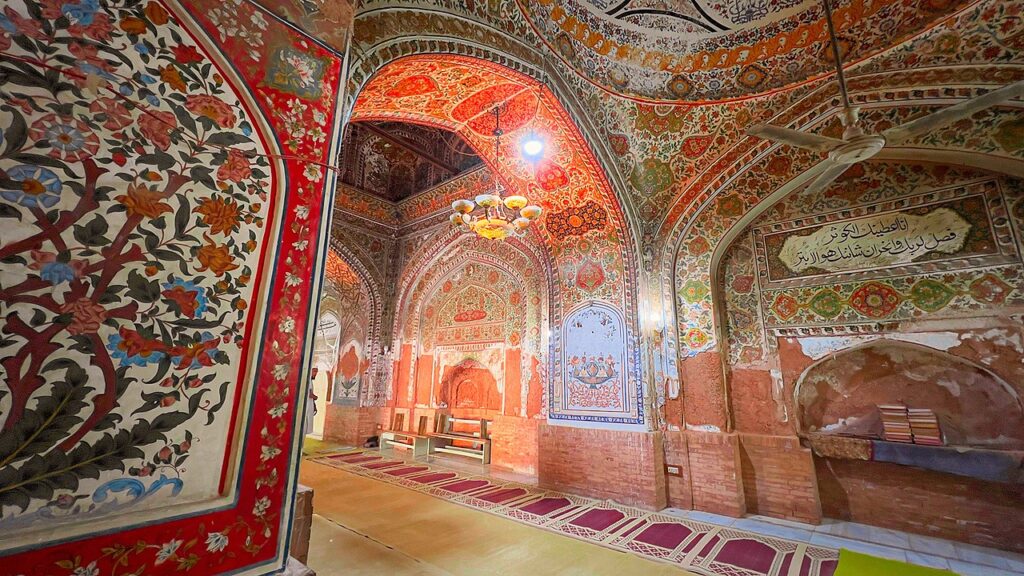
Constructed atop a tall mound in the Andar Sher bazaar, close to the historic Chowkyadgar in Peshawar City, the sanctuary welcomes worshippers into an expansive 30,155 square foot open courtyard that can hold up to 20,000–30,000 people at once. A central ablution pool and a single row of rooms lining the outer walls, accentuated by two towering minarets, complete the scene.
The mosque’s five arched entryways are flanked by six smaller decorative minarets that crown the prayer hall’s facade. Two more minarets and the prayer hall itself are crowned by three magnificent domes that command attention from onlookers.
The mosque’s facade was adorned with Mughal frescoes that accentuated its splendor, while its ceiling featured sophisticated crimson frescoes with geometric and floral designs.
The Mosque of Mohabat Khan, with its distinctive architecture and illustrious past, epitomizes Peshawar. Professor Ehtisham Qaiser, a resident of Wapda Town Nowshera, told APP, “I have been coming to this historic mosque in Peshawar for Mahfil-e-Shabina and Khatam-e-Quran in the last three days of Ramazanul Mubarak for the last ten years. Its spiritual environment takes the worshipers to a new world.”
He said that the shopkeepers, whose stores the Auqaf department had rented, had dug out additional tiny cabins and expanded their businesses several feet by doing so, which had a detrimental effect on the mosque’s external view.
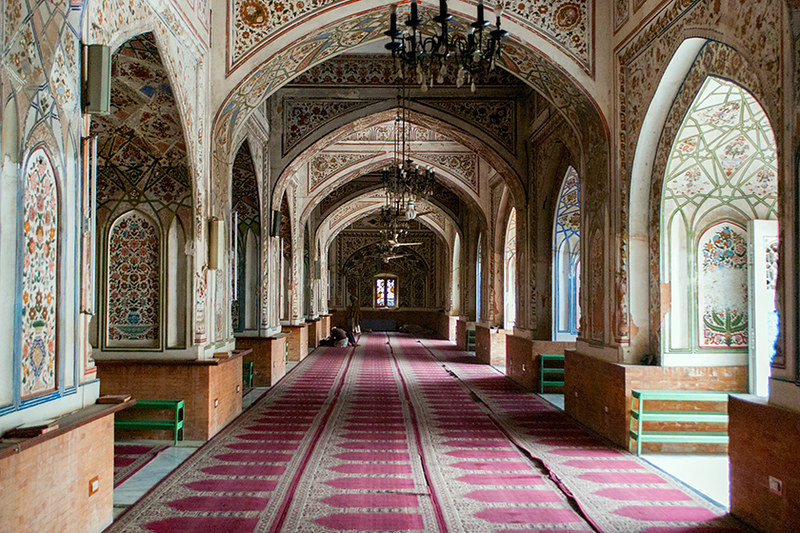
In order to restore the mosque’s original grandeur and architectural designs, he noted that the building of enormous, unlawfully built plazas and businesses around it had a negative impact on its outside architecture. He thus demanded the destruction of all of these illegal structures.
“The mosque had previously experienced man-made vandalism, which had caused some serious damage. Fortunately, it was made reversible and the building was saved from collapse through timely intervention and the use of scientific techniques and original material,” Bakhtzada said.
Following the approval of the Rs87.70 million Mohabat Khan Mosque conservation project, the mosque recently underwent extensive conservation work. We have finished 60% of the restoration and preservation work on its domes, ablution area, minarets, and other areas without sacrificing the architectural designs from the Mughal era.
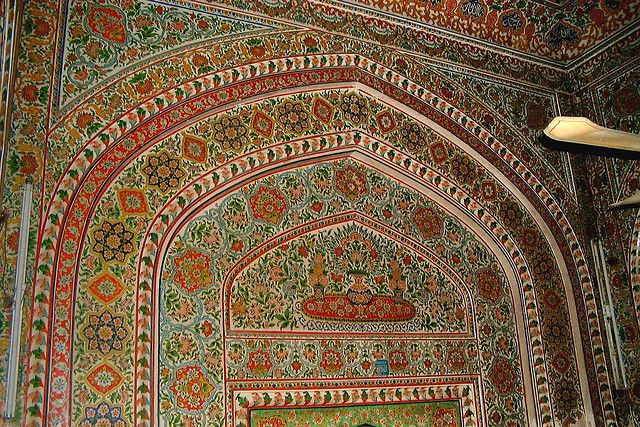
According to him, during his visit to the Mohabat Khan mosque last year, former Chief Minister Mahmood Khan increased the project’s funding to Rs160 million with instructions for work expansion. The money would be used for the mosque’s decoration, lighting, and beautification so that it would resemble the Peshawar Museum at night and encourage religious tourism.
He said that in order to finish the project by 2024 in accordance with international standards, the PC-I of the project had been amended under the direction of the Director of Archeology and Museums and conservation specialists would be hired.





